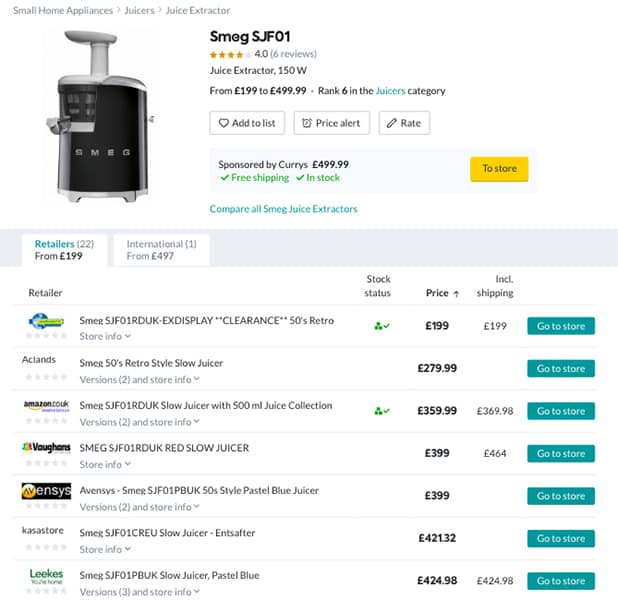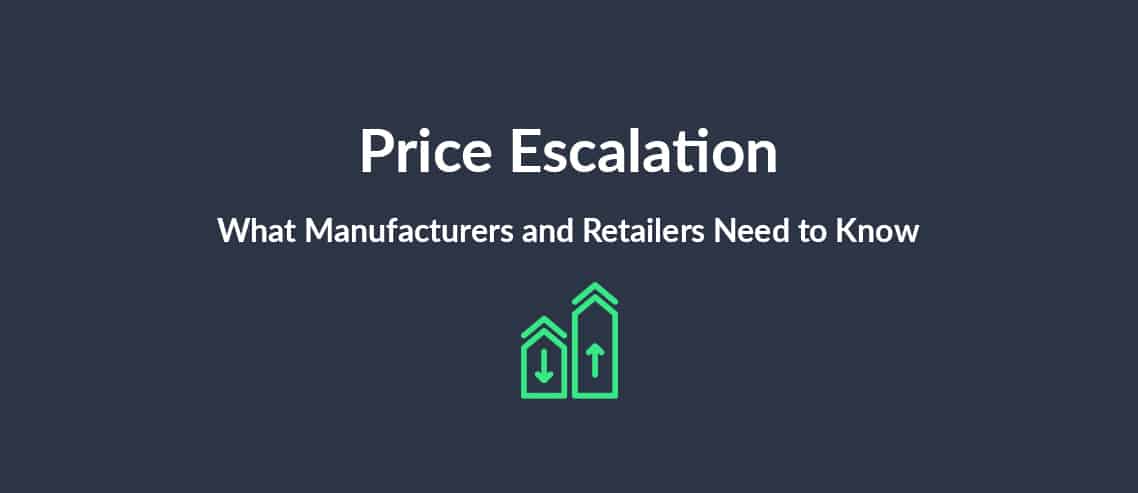Imagine a world where you were always able to command competitive prices for your products and still make a profit. That world is well within your reach if you start implementing smart pricing tactics. They help you stop undercutting your prices to achieve a competitive advantage.
Estimated reading time: 4 minutes
Table of contents
We’re going to look at a number of ways you can implement smart pricing to your ecommerce store to gain competitive advantage and increase your profits at the same time.
What is ecommerce smart pricing?
Smart pricing is a strategy where you set dynamic pricing rules based on changing market conditions.
It includes monitoring competitor prices and frequently adjusting prices against competitors to offer competitive deals while protecting your profit margins.
Ease of setting these rules enables online retailers to test different prices on a daily basis. As a result, decision-makers allocate their resources to sophisticated decision making instead of manually testing different price points.
What’s the use of testing so many price points?
Reach targeted profit margins even when you’re competitive
Most ecommerce store owners dream of being the most competitive in their particular market. But usually, being competitive is mistaken for a race-to-the-bottom strategy, and therefore, profits are low.
Just because you aim to be competitive, doesn’t mean you have to be the cheapest and lose out on profits.
Take this store as an example.

Yes, this price will attract so many new customers and it can even build hype around this store. But an £80 difference from the closest competitor has two uncanny consequences.
First, it’s too much to leave on the table. If they sold it for £270, it would still attract many consumers. Why give up on £70 per unit?
Second, in our subconscious minds, there is a strong relationship between price and quality. Even if we love the cheapest deals, we don’t expect an £80 difference. It makes us doubt the quality of the product, as well as the service.
How smart pricing solve this problem?
As the first step, pricing software automatically tracks competitor prices for you. Based on competitor price knowledge, it recommends a smart price for each product on your inventory.
Furthermore, you can have total control over your pricing decisions and positioning of your prices with the rules you can set like:
- My price should be $20 higher than cheapest of my competitors but it should not be lower than my cost + $20
- My price should be $15 lower than average of my competitors but it should not be lower than my cost + %20
- The price should be equal to average
These rules make sure that you cover your costs, offer the best deals and position wherever you want in the market.
Smart ecommerce pricing in action
CoolSafety successfully used a range of smart pricing in order to increase their turnover. Let’s look at a little deeper into their approach.
CoolSafety is a Netherlands based company selling protection apparel like gloves and helmets. They’re a fairly established company of 15 years with a range of different subdomains for specific categories in their industry.
Their average basket size is €85. Before implementing smart pricing, they struggled to track competitors continuously.
After six months of taking a multidimensional approach to pricing, Coolsafety was able to respond to their customers quicker, see price adjustments on a daily basis, as opposed to an ad-hoc one and increase their turnover for a number of key products.
It was an impossible task for us to complete before Prisync because of the manual work to track our competitors’ prices properly and continuously
Rosa Starmans, Project Manager at CoolSafety
Smart pricing solution takeaways
Today’s shoppers know where to find the best deals. Comparison shopping engines help them find the cheapest price for a product within a few seconds.
Of course, the shopping experience also matters. But almost nothing worths to pay €90 more for a product. That’s why you need competitor price knowledge and react to changes in real-time.
If you’re not tracking your competitor’s pricing automatically, you’re leaving money on the table. The money your competitors are taking for their own businesses.
In this blog post, we’ve looked at what smart pricing is and looked at a range of businesses already implementing smart pricing strategies to increase their profits and revenue.
Pricing is not a one-dimensional process and if you want to succeed, you need to think of it as multidimensional and consider all the different ways you can use pricing to your competitive advantage.
ecommerce pricingpricing strategiessmart pricing


Leave a Reply